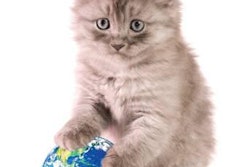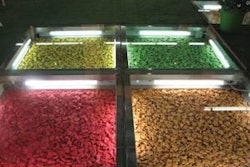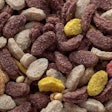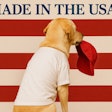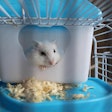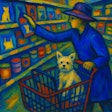With the deepening recession, credit crunch, and with consumers becoming frugal, the retail channels are responding to the new realities. With unemployment reaching double digits and fewer jobs being created consumers have changed their shopping habits. Value and convenience have become very important. Discretionary spending is reduced , consumers are making fewer trips to stores, savings have reached an all time high of 4% of income ( from negative savings rate a few years ago), consumers are getting smarter, buy local movement is getting stronger, consumers are adopting healthier life styles ( healthy foods, exercises). Consumer spending accounts for 2/3rd of US economy. If they cut back it will have tremendous impact on not just the US economy but global economy. The changing consumer habits are here to stay for a long time.
The retail formats such as grocers (Kroger, Safeway, Supervalu), Mass Merchandisers including Supercenters (Wal-Mart, Meijer), Drug Stores (Walgreens, CVS, Rite Aid), Specialty (Petsmart, Petco), Dollar Stores, Club (Sams, Costco etc) are responding to the new realities.
The changing retail landscape will have a significant impact on small and mid size pet food companies. Larger companies will be able to weather the storm better than small and mid size companies.
Changing Retail Landscape
A. Market growth is stagnating
The current pet population remains steady and is not increasing
any time soon. There are 74.8 Million dogs and 88.3 MM cats in
the US. 39% of households had a dog, the breakup of which is as
follows: (63% had 1 dog, 25% had two dogs, 12% had three
or more dogs ). 38.4 million house-holds (34% households)
had at-least one cat, 56% owned more than one cat. On an
average households had 2 dogs or 2 cats on an average. The
overall number of households in the US that had pets is around
58 million and this number will remain stagnant in the
foreseeable future. This means every retailer is competing for
the same customer in a stagnant market where pet ownership is
steady.
B. Consolidation among the players will continue
and smaller players will shut down for good
Market growth is stagnating for most if not for all goods.
Retailers have to compete against each other to offer lower
price, higher value. Most goods become a commodity as prices
keep falling. Deflation is still an issue with the current
economy. For retailers, size is the key to survival in such a
scenario. Larger national players will acquire smaller regional
players for survival. The number of retailers will decline this
means fewer stores that will carry pet food and pet care items.
The competition for shelf space will be fierce.
C. Credit Crunch will lead to increase in retail
bankruptcies
As credit dries up retailers will have difficulty raising
capital. Cash flow will be an important issue for many
retailers. There will be increased retail bankruptcies. As
store closing become increasingly a common thing pet food
manufacturers will have to find different avenues to sell
product.
D. Some Bigger Retailers going with smaller store
format
Wal-Mart has smaller store format marketside, Giant Eagle
has GetGo, Jewel has URBAN fresh. These are smaller
compact stores that carry fewer SKUs and fewer choices. This
will have a major impact on larger pet food manufacturers who
will have to rationalize the SKU. Retailers will want to
eliminate slower moving SKUs
E. Buy Local save the local economy
Be local, buy local save the local jobs will become a powerful
grass root level movement. This movement should help smaller
manufacturers of pet foods.
F. Value discounters, Super Centers and Club will
be major players
Consumers have become frugal and avoid unnecessary spending
this trend will continue. They are constantly looking for
price, values and convenience. Wal-Mart Supercenters, Club
stores (SAMS club, Costco) and Value discounters (Aldi) will
become stronger players. Wal-Mart's new slogan save more, live
better fits the consumer psyche. Larger pet food manufacturers
are better positioned to provide value discounters with low
cost items.
G. Retailers operating in a zero sum game where
every winner is offset by someone losing
Stagnant markets, lack of growth leads to situation in retail
where some retailers will lose at the cost of some clear
winners. Retailers are shifting from growth agenda to
optimization agenda. In this scenario many regional players may
lose to larger retailers such as Wal-Mart, Kroger and Club
Stores. This will have an impact on regional pet food
manufacturers who are dependent on regional retailers
H. Growth of Private label
Private label brands are growing and are offered at 5-10%
cheaper than branded products. The quality of private label
brands have improved significantly over the years as the
retailers demand high quality products as the branded cousins.
This may exert pressure on manufacturer to reduce the cost of
branded products as well. Private label brands will grow and
this may help smaller manufacturers who are in survival
mode.
I. Alternatives to currently existing retail
channels
Whole Food (organic, no preservatives) Trader Joes ( small
store format, private label, organic offerings) offer alternate
retail formats. The alternate channels will remain small in the
current environment unless the prices come down. Consumers
definitely want healthy products to feed themselves or their
pets but cannot afford the price at this time. Organic pet food
growth will be slow to stagnant. If the manufacturers can
reduce the price differences between organic and non-organic
products substantially it will be hard for organic brands to
grow. Organic will remain a niche market in pet foods. Whole
Foods encourages local manufacturers and this may help small
pet food companies.
J. Shopper insights and shopper marketing are
being recognized as a priority area for retailers
Retailers are spending on understanding shopper insights and
shopper marketing instead of getting the information from
manufacturer. This way retailers are in a position to demand
the right product at the right price for the consumers without
compromising on their own margin structure. This will exert
more pressure on pet food manufacturers to reduce costs.
Actionable shopper data is creating leadership opportunities
for retailers and retailers are in a better position to dictate
to manufacturers on the kind of product to be stocked at retail
shelves and at a saleable price. Many larger retailers may be
willing to work with mid size and smaller pet food companies by
sharing consumer insight data.
K. Pressure on cost containment and margin
enhancement
Retailers are under tremendous pressure to reduce costs and
enhance the margins. Wal-Mart seems to be doing a nice job in
this area compared to its competition. Wal-Mart will continue
to be courted by both large and small companies for placement
of their products. Smaller and midsize pet food manufacturers
may have difficult time satisfying Wal-Mart's strict
requirements on sustainability
L. Retailers offering more services which will
drive traffic, profits and differentiation
Retailers are offering various other services to drive traffic
into the store. They are offering services such as paying
utility bills, buying stamps and wine tasting classes and
cooking classes. Petsmart offers several pet related services
such as grooming and vet clinics.
M. Sustainability is a big theme among
retailers
Wal-Mart is leading the way in sustainability. LEED
certification, packaging and waste reduction will figure
prominently in all major retailers blue-print for success. Pet
food manufacturers may have to show their commitment to
sustainability programs to large retailers.
N. Retailers want to simplify so fewer brands and
fewer customers may carry 90% of the volume.
Retailers look for velocity and high margin items. They are
buying what they need and not what they want. They are
optimizing on shelf space, labor and experimenting with
multiple formats. Fewer brands with
high velocity and high margin will do well. Retailers will
expect SKU rationalization from manufacturers, slow moving
items will be eliminated from stores to make space for new
items with sustainability, growth and profitability.
O. Everyday low pricing(EDLP) will be the theme at
retailers
Wal-Mart's theme will be ringing across all retailers. Coupons
may eventually go away and give way to EDLP. Retailers would
put pressure on pet food manufacturers to reduce prices
Innovation as a Means to Generate Sustainable Revenue Growth
Given the changing retail landscape and changing consumer habits due to economic crisis innovation is the way to generate sustainable demand by providing meaningful benefits to consumer and thereby forging path for incremental revenue. For small and mid size manufacturers innovation is the key to survive. Innovation is not restricted to just creation of new products or processes. The beauty of innovation is that it has no boundaries it can be in any part of an organization (marketing, research, accounting, transportation and logistics, operations, business development, sales, market development organization, Quality assurance, customer development group etc) that adds value in the supply chain. If the innovation does not add value to the customer (price, value, quality, service) or solve a problem, it is meaningless to the retailer and to the customer.
A clear vision supported by well thought out strategies and action plans to execute the key objectives are essential for smaller manufacturers. Smaller players are nimble, agile and can come up unique products fairly quickly to the market.


